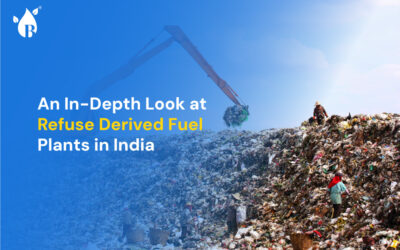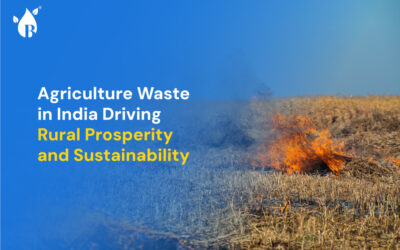
Delve into the significance of Earth Overshoot Day in our latest post. Explore how our resource consumption surpasses Earth’s capacity for renewal and learn about the consequences. Discover actionable steps we can take to recalibrate our relationship with the planet and work towards a more sustainable future.
The Earth has evolved immensely over time and the changes that occurred have provided the conditions required for human beings to live comfortably. But now, it’s crucial to ask ourselves a critical question: have we been good stewards of our planet? If we’re honest with ourselves, the answer resounds clearly – we’re not doing the best job.
Everything is like a big math problem in today’s world. Whether it’s managing our money, going about our daily routines, or even just taking a walk outside, it all involves some sort of calculation. And guess what? All these calculations are connected to the stuff we get from our planet – like water, air, and land – because we rely on it for pretty much everything we do.
While we may excel at managing our personal lives and strive to find the best ways to navigate through them, we heavily stumble when it comes to treating or utilizing our planet’s resources kindly and wisely. In this blog, let’s look into one such calculation that will make us rethink and redefine our lives to better align with nature.
Earth Overshoot Day and its Origin
Earth Overshoot Day marks the date when humanity has consumed all resources that the Earth can regenerate within a given year. The day, also known as Ecological Debt Day, has been calculated since 1986 by the Global Footprint Network, a non-profit research organization. It is an important date on the calendar that highlights the ongoing issue of unsustainable resource consumption patterns globally.
This year, Earth Overshoot Day 2023 occurred on August 2, marking a shift of five days later compared to the previous year. However, it is important to note that four of those days can be attributed to the inclusion of new data sets, which have provided a more comprehensive understanding of our resource consumption.
Looking ahead, we have a significant challenge to tackle. In order to align with the United Nations’ IPCC target of reducing global carbon emissions by 43% by 2030 (in comparison to 2010 levels), we must, in the next seven years, consistently push back Earth Overshoot Day by 19 days each year.
Steven Tebbe, the CEO of Global Footprint Network, sounds the alarm about the consequences of continuous overshoot. He highlights the increasing occurrence of extreme heat waves, rampant forest fires, prolonged droughts, and devastating floods. These events not only disrupt daily life but also pose a significant threat to food production.
This ambitious target calls for a collective effort and a renewed commitment to sustainable practices in order to preserve our planet for future generations.
Calculation oF Earth Overshoot Day – Where are we so far?
The Global Footprint Network organization uses the ecological footprint concept to measure the amount of resources the planet can regenerate annually and compares it with the number of resources that human beings are consuming beyond the planet’s carrying capacity. The result, expressed in days, represents the point in the year when humanity’s resource consumption exceeds Earth’s ability to replenish them.
The calculations for Earth Overshoot Day include factors such as carbon footprints, food consumption, and other resources contributing to human ecological impact. The day’s calculation is updated every year, taking into account data from a range of sources to provide a more comprehensive understanding of our impact on the planet.
The day’s shift in date over the years emphasizes the urgent need for adopting sustainable practices and raising awareness about the importance of living within our planet’s means.

Why is Earth Overshoot Day significant?
Earth Overshoot Day represents a significant milestone on the environmental calendar and illustrates the fundamental trade-off between our economic growth and the use of natural resources. It marks the day when humanity’s annual consumption of the Earth’s resources exceeds its capacity to regenerate these same resources in the same year.
The timing of Earth Overshoot Day is determined by rigorous research and calculations, providing a tangible representation of the environmental challenges we face. It highlights the need for a more sustainable and efficient use of natural resources, reduction of emissions, and the preservation of ecosystem services to ensure a stable environment for current and future generations.
By understanding our planet’s limits, we can take bold and meaningful steps to adjust our lifestyles, policies and business practices towards a more sustainable and equitable future, and ultimately achieve planetary balance. The significance of Earth Overshoot Day serves as a call to action to prioritize sustainable development and conservation of our planet’s resources.
“In order to align with the United Nations’ IPCC target of reducing global carbon emissions by 43% by 2030 (in comparison to 2010 levels), we must, in the next seven years, consistently push back Earth Overshoot Day by 19 days each year.”
What needs to be done?
Maintaining Earth Overshoot Day in a sustainable manner requires collective effort, conscious choices, and a commitment to reducing our ecological footprint. Here are some essential steps that need to be taken to keep Earth Overshoot Day in check and restore balance to our relationship with the planet:
1. Reduce Carbon Emissions: A significant contributor to overshooting Earth’s capacity is the excess carbon emissions we release into the atmosphere. Transitioning to renewable energy sources, improving energy efficiency, and promoting sustainable transportation can help curb these emissions and slow down the rate at which we exceed the planet’s limits.
2. Promote Sustainable Consumption: Consumer choices play a critical role in overshooting Earth’s resources. Supporting eco-friendly products, reducing waste, and opting for minimalistic lifestyles can decrease the demand for resources and lower our ecological footprint.
3. Preserve Biodiversity: Protecting biodiversity is essential for maintaining the planet’s resilience. Conserving natural habitats, preventing deforestation, and supporting sustainable agriculture practices help maintain the delicate balance of ecosystems and reduce the strain on resources.
4. Resource Management: Efficient Efficiently managing resources like water, land, and minerals is vital. Implementing responsible farming techniques, reducing water waste, and practicing sustainable land management can ensure these resources are used wisely.
5. Invest in Renewable Resources: Moving away from finite resources and investing in renewable alternatives can help extend the availability of essential materials. Renewable energy, recyclable materials, and sustainable farming methods can contribute to a more balanced resource use.
5. Invest in Renewable Resources: Moving away from finite resources and investing in renewable alternatives can help extend the availability of essential materials. Renewable energy, recyclable materials, and sustainable farming methods can contribute to a more balanced resource use.
6. Educate and Raise Awareness: Educating people about the concept of Earth Overshoot Day, its implications, and the steps needed to correct our course is crucial. Raising awareness through educational campaigns, media, and community engagement can inspire positive change.
7. Policy Changes: Governments and policymakers play a significant role in shaping our environmental practices. Implementing regulations that encourage sustainable practices, carbon reduction, and responsible resource management can create a supportive framework for change.
8. Innovate and Research: Advancing technology and scientific research can lead to innovative solutions that lessen our impact on the planet. Investing in sustainable technologies, eco-friendly materials, and efficient resource utilization can contribute to long-term sustainability.
9. Collaboration on Global Scale: Earth Overshoot Day is a global issue that requires international collaboration. Governments, organizations, businesses, and individuals must work together to implement effective solutions that span geographical boundaries.
10. Long-Term Vision: Creating a more sustainable future requires a long-term vision. Striving for a circular economy, where materials are reused and recycled, can drastically reduce waste and slow down resource depletion.
Ultimately, maintaining Earth Overshoot Day correctly involves a holistic approach that touches various aspects of our lives. By making conscious choices and embracing sustainable practices, we can extend the planet’s resources, restore its health, and secure a brighter future for generations to come.
Join us at Buyofuel in our commitment to preserving our planet and maintaining a balanced Earth Overshoot Day. We firmly believe that even the smallest actions can lead to significant positive changes for our environment. It’s time to come together and be mindful of our choices.



